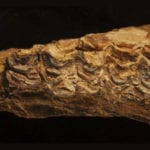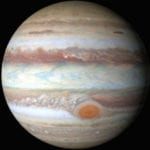 Mysteries
Mysteries  Mysteries
Mysteries  History
History 10 Surprising Stories About the Texas Rangers
 Humans
Humans 10 Philosophers Who Were Driven Mad by Their Own Theories
 Miscellaneous
Miscellaneous 10 Video-Game-Worthy Weapons and Armors from History
 Weird Stuff
Weird Stuff 10 Psychics Who Accurately Predicted Wartime Events
 The Arts
The Arts 10 Pieces of Art Inspired by a Broken Heart
 Health
Health 10 Science Fiction-Sounding New Medical Treatments
 History
History 10 Surprising Facts About the Father of Submarine Warfare
 Space
Space Ten Astonishing New Insights into Alien Worlds
 Weird Stuff
Weird Stuff 10 Bizarre Summer Solstice Rituals Still Practiced Today
 Mysteries
Mysteries Top 10 Haunting Facts About the Ghost Ship MV Alta
 History
History 10 Surprising Stories About the Texas Rangers
 Humans
Humans 10 Philosophers Who Were Driven Mad by Their Own Theories
Who's Behind Listverse?

Jamie Frater
Head Editor
Jamie founded Listverse due to an insatiable desire to share fascinating, obscure, and bizarre facts. He has been a guest speaker on numerous national radio and television stations and is a five time published author.
More About Us Miscellaneous
Miscellaneous 10 Video-Game-Worthy Weapons and Armors from History
 Weird Stuff
Weird Stuff 10 Psychics Who Accurately Predicted Wartime Events
 The Arts
The Arts 10 Pieces of Art Inspired by a Broken Heart
 Health
Health 10 Science Fiction-Sounding New Medical Treatments
 History
History 10 Surprising Facts About the Father of Submarine Warfare
 Space
Space Ten Astonishing New Insights into Alien Worlds
 Weird Stuff
Weird Stuff 10 Bizarre Summer Solstice Rituals Still Practiced Today
10 Strange and Surreal Sounds Captured by Scientists
Sound recording technology has come a long way since its invention in the 19th century. While its best-known uses might be bringing you your favorite music and podcasts, there are many surprising ways sounds are being used in scientific research.
Here are ten strange and surreal examples, and you will not believe that some of them can even make a sound at all!
Related: 8 Science Mysteries That Got Even More Baffling Recently
10 Glaciers Melting
As global temperatures rise, scientists need to know how quickly glaciers will melt to help them with tasks such as predicting sea-level rises. Traditionally, photography or satellite imagery has been used for this purpose, but more recently, scientists have been listening to glaciers using hydrophones, which are underwater microphones. This helps them hear what is going on beneath the surface.
Apparently, a melting glacier sounds like firecrackers or frying bacon! The popping sounds happen as bubbles pop out into the water. The aim is to count the ratio of bubbles popping to the number of bubbles in the glacier to know how quickly the glaciers are melting. The research is much more important than it sounds on the surface: rising sea levels could have devastating effects on hundreds of millions of people all around the world.[1]
9 Un-Muting Animals
We all know the sounds a bird, cat, or frog makes. You may even know what sound a fox makes. But many other animals’ sounds remain a mystery to us, especially when it comes to amphibious and sea creatures. Gabriel Jorgewich Cohen, a Ph.D. student from Zurich, has been leading research on whether many such species actually make noise at all, and it turns out that many of them do. You can even hear them on his recordings.
The sounds were also recorded using a hydrophone, much like the glaciers. Traveling to several institutions across five countries, Cohen recorded a large number of animal species that had previously been assumed to be mute, including fifty species of turtles and lungfish, which are fish that can breathe air. He discovered that none of them were mute. Every animal he recorded made sounds. What’s more, the findings suggest that a common ancestor may have been shared between sound-producing species around 407 million years ago.[2]
8 The Whole Planet
Back in 2014, sensors were switched on in Indiana, USA, which were designed to record every sound made on the planet for a whole year. Yes, every sound: birds singing, bats’ ultrasonic whistling, waves in the ocean, earthquakes, and everything else. The research was led by Bryan Pijanowski, who defines himself as a “soundscape ecologist.” The distinction is made from a more regular ecologist by the fact that instead of listening to the sounds of a single species to learn about them, Pijanowski listens to find out how those sounds interact with those of other species and the environment.
In his work, he listens for nature’s rhythms and patterns, such as the world getting louder at dawn and during certain seasons. Tracking such patterns may be able to provide scientists with important data about the state of the planet.[3]
7 A Single Bacterium
A surprising fact you may not know is that every living cell produces a sound through tiny vibrations known as “nanomotion.” The invention of the highly-sensitive material graphene allowed scientists to amplify the sounds of nanomotion, which they discovered allowed them to hear the sounds produced by bacteria. They could even distinguish between living and dead bacteria this way.
Strangely, the graphene proved so sensitive they were actually able to listen to a solo bacterium taking a little swim as it moved around by itself in some water. But the research has a more important agenda: It could be crucial in the fight against infectious diseases and antibiotic resistance.[4]
6 Martian Storms
The Perseverance rover carried the first working microphone on Mars. Despite only recording for three minutes every couple of days, it made some important discoveries, including recording a whirlwind on the planet. The team had already seen evidence of nearly 100 dust devils since the rover’s landing but considered themselves lucky the first time one passed over while the microphone was on.
The sound recording helped them better understand the Martian atmosphere and weather, along with other tools such as air pressure readings and time-lapse photography. They learned that Martian dust devils are somewhat of a similar power to those on Earth, meaning future astronauts need not worry about gale-force winds blowing down equipment.[5]
5 A Black Hole
In space, nobody can hear you scream, right? Well, not exactly. It is true that sounds need a medium to travel, such as air or water, but space is a vacuum and does not have these. So it should be dead silent. But in 2022, NASA proved this is not entirely accurate. Space is not a complete vacuum chamber, so it is not completely silent. Galaxy clusters contain gases that can provide the medium for sound waves to travel.
Because of this, NASA was able to record the sound emanating from a black hole. They had to amplify it many times since the sound was at a pitch some 57 octaves below middle C, far too low to be heard by human ears. If having to scale the note up 57 times to be able to listen to it sounds like a lot, consider that in frequency terms, it had to be scaled up about 288 quadrillion times higher than the original, and a quadrillion has 15 zeros![6]
4 Deep Sea Species
As well as sea levels rising, oceans are also getting warmer. Scientists worry this could lead to irreversible changes to underwater ecosystems and the extinction of some species. In response to this, an international team of marine biologists began a project called “GLUBS,” or the Global Library of Underwater Biological Sounds. For the project, they record the surprisingly vast breadth of sounds heard deep on the seabed in the hope that the recordings can be used to identify and learn about species.
Dolphins and whales are far from the only creatures that make noises in the ocean; among many other sounds, scientists have even heard sea urchins scraping and eating the algae off of coral reefs. Many of the other sounds captured have yet to be linked to the species making them. The researchers hope algorithms will assist them in matching the sound and species.[7]
3 Earth’s Magnetic Field
In 2022, scientists at the Technical University of Denmark (DTU) managed to convert magnetic signals measured by the European Space Agency’s (ESA) Swarm satellite into sound. The satellites—launched in 2013—captured the creak-like sounds while measuring the Earth’s magnetic field, which protects the planet’s inhabitants from cosmic radiation.
The data from the magnetic signals was used to create a sonic representation of the Earth’s core magnetic field. In this case, the sound was not captured directly but molded using the characteristics of the data gathered by the satellites. The resulting audio represents the magnetic field generated by Earth’s core in interaction with a solar storm. It is hoped this research can help scientists understand the weather in space, in addition to increasing knowledge of Earth’s magnetic field.[8]
2 An Atom
Interactions between atoms and light have been well-researched in certain branches of physics. Less well understood is the interaction of sound waves with atoms. But in 2014, scientists successfully used sound for the first time to “talk” to an atom, albeit an artificial one. However, an artificial atom, like a regular atom, can be charged using energy which it then emits in the form of a particle. The resulting particle is usually a light particle.
However, researchers at Chalmers University in Sweden produced an atom that could be charged with and emit energy in the form of sound. One of the researchers explained how this sound is the weakest that can be detected. They hope the research will inspire new insights into quantum phenomena because sound travels much slower than light, so scientists will potentially have more time to control and observe quantum particles.[9]
1 The Sun
A lot happens inside the Sun: eruptions, waves bouncing around, solar flares, and more. But human eyes are not sensitive enough to see them, and even with the visual technologies scientists have, they still cannot see what is happening inside. Instead, they use vibrations produced by the Sun’s waves and eruptions and sonify them in order to learn more about the center of our solar system.
This research has been led by the European Space Agency and NASA, who have been capturing vibrations produced by the Sun’s movements for over 20 years. The vibration data is cleaned up to remove, among other things, the sounds of spacecraft (hopefully man-made!). The frequency is then ramped up by a factor of 42,000 to make it audible to the human ear. You can actually listen to the slightly eerie pulsating hum of our closest star on the NASA website.[10]








